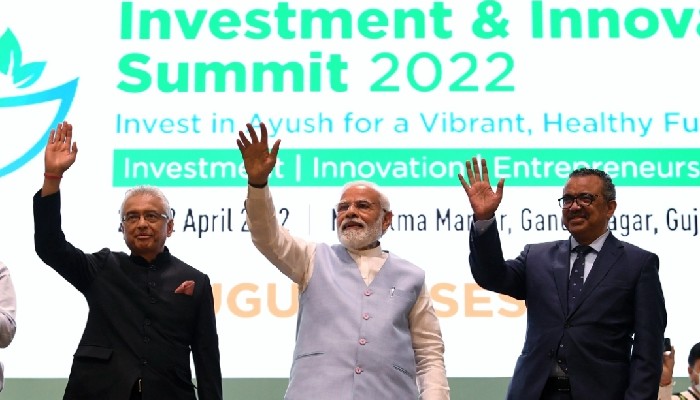Buddhist philosophy and art of Central Asia connect SCO countries to each other, Vice President M Venkaiah Naidu said
For the first time, SCO online exhibition on ‘Shared Buddhist Heritage’ was launched by Vice President M Venkaiah Naidu during the 19th Meeting of the SCO Council of Heads of Government on Monday.
The SCO online exhibition, first ever of its kind, was developed and curated by New Delhi-based National Museum, in active collaboration with SCO member countries. The exhibition deployed state of the art technologies like 3D scanning, webGL platform, virtual space utilization, innovative curation and narration methodology etc.
Buddhist philosophy and art of Central Asia connects Shanghai Cooperation Organization (SCO) countries to each other. This online international exhibition presented an excellent opportunity for visitors to access, appreciate and compare Buddhist art antiquities from SCO countries on a single platform and from the comfort of their home. Such transnational online exhibitions also held potential to connect, heal and rejuvenate communities in current pandemic times.
The international exhibition gave a glimpse of the artistic wealth displayed in various museums across Asia, and represented the artistic excellence embedded within an eclectic historical timeline spanning across the development of different schools of Buddhism.
The participating institutions were National Museum (New Delhi), Indian Museum (Kolkata), National Museum of Kazakhstan, Dun Huang Academy (China), National Historical Museum of the Kyrgyz Republic, Museums of Pakistan, State Museum of Oriental Art, Moscow (Russia), National Museum and National Museum of Antiquities, Tajikistan and renowned archaeological sites of Uzbekistan.
The visitors could explore the Indian Buddhist treasures from the Gandhara and Mathura Schools, Nalanda, Amaravati, Sarnath in a 3D virtual format. The Pakistan hall depicted the life of Gautama Buddha and Buddhist Art through a collection of impressive Gandhara art objects from Karachi, Lahore, Taxila, Islamabad, SWAT and Peshawar museums. These include fasting Siddhartha and footprint of Buddha from Sikri, meditating Buddha from Sahri Bahloi, miracle of Sravasti from Gandhara.
Over 100 objects from State Oriental Art Museum, Moscow, depicted the Buddhist Buryat Art of Russia through icons, ritual objects, monastery traditions. The Dunhuang Academy of China contributed a rich digital collection on Buddhist Art from Dunhuang that include ingenious architecture, resplendent murals, decorative designs, costumes.
The marvels of Buddhist art from ancient Termez, Karatepa, Fayaztepa heritage sites could be seen in the Uzbekistan hall. The exhibition also showcased rare Buddhist art objects from various heritage sites and museums of Kazakhstan and Kyrgyzstan. The prime attraction of Tajikistan hall was the 13 meter long reclining - ‘Buddha in Nirvana’ from Ajina-Tepa.
The National Museum unfolded a new dimension in museum experiences by developing this online 3D virtual exhibition. The Prime Minister of India, in his Maan Ki Baat radio programme on 29 had lauded the National Museum for its innovative efforts of using technology in the cultural sector.
 Contact Us
Contact Us  Subscribe Us
Subscribe Us









 Contact Us
Contact Us
 Subscribe
Subscribe
 News Letter
News Letter

